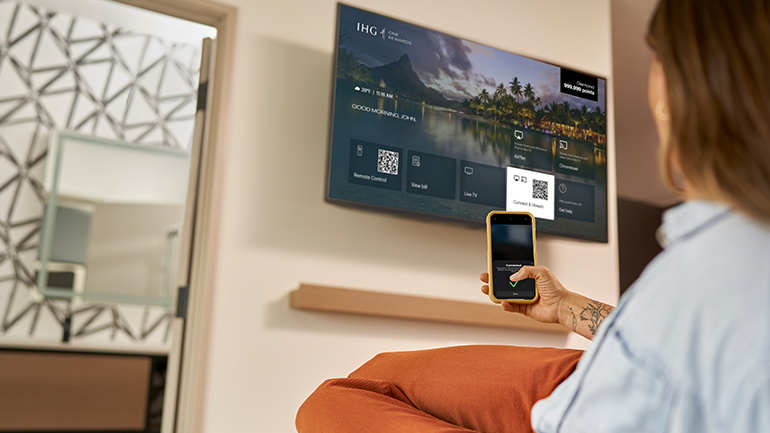
Google Pixel 6 vs. Pixel 6 Pro: What are the Differences?

Image: Google
Earlier this week, Google unveiled its latest Pixel 6 and Pixel 6 Pro smartphones at its online Pixel Fall Launch event. Unlike the Pixel ‘XL’s of yesteryear, however, there’s more that separates the Pixel 6 and Pixel 6 Pro than just sheer physical size and battery capacity.
Let’s take a look at some of the most noteworthy differences between the new Google Pixel 6 and its ‘Pro’ sibling:
Display
The Pixel 6 has a 6.4″ AMOLED display with a 90Hz adaptive refresh rate and a 1080 x 2400 FHD+ resolution.
With a 6.71″ LTPO AMOLED panel featuring a 120Hz adaptive refresh rate and a 1440 x 3120 QHD+ resolution, the Pixel 6 Pro doesn’t just have a bigger screen — it has a better one.
The Pixel 6 features a flat-edged display, whereas the LTPO AMOLED panel on the Pixel 6 Pro has curved edges. Both phones have HDR 10+ support.
For screen protection, both devices have been upgraded to the considerably tougher Gorilla Glass Victus. In addition to Always-on Display, both new Pixel phones get some new display features like Now Playing, At a glace, and high brightness mode.
Design
For the Pixel 6 lineup, Google went back to the drawing board, and love or hate the linear camera module on the back all you want, the new dual-toned design is fresh and ambitious.
Both the Pixel 6 and its Pro counterpart sport the same new design language, with a glass front, a glass back, and an aluminum chassis.
Both phones feature IP68 water and dust resistance, as well as an additional fingerprint-resistant coating to keep skin oils from smudging the glass body. The Pixel 6 and Pixel 6 Pro share a similar stereo speaker setup, along with an array of three microphones.
Instead of the rear-mounted fingerprint sensor found in previous generations, the Pixel 6 and Pixel 6 Pro incorporate an optical, under-display fingerprint sensor.
The Pixel 6 is available in three colours: Sorta Seafoam, Kinda Coral, and Stormy Black.
The Pixel 6 Pro, on the other hand, is available in Cloudy White, Sorta Sunny, and Stormy Black.
CPU/GPU
The Pixel 6 and Pixel 6 Pro both pack identical CPU/GPU combos under the hood — Google’s in-house 5nm octa-core Tensor System on a Chip (SoC), with a Mali-G78 MP20 GPU, both at the same clock speeds.
Google hopes the seamless synergy between the Pixel 6 lineup’s hardware and software, both of which are of the company’s creation, will allow its Tensor chip to go toe-to-toe with flagship Android processors. The company says the Pixel 6 lineup delivers 80% faster CPU performance and 370% faster GPU performance compared to last year’s Pixel 5.
Both devices are also fitted with a Titan M2 security coprocessor, as well as a dedicated security core.
Memory and Storage
The base Pixel 6 is available with 8GB of RAM and either 128GB or 256GB of UFS 3.1 storage. The Pixel 6 Pro, on the other hand, comes with a whopping 12GB of RAM, and customers can choose between 128GB, 256GB, or 512GB of UFS 3.1 storage. It’s worth noting the 512GB storage option isn’t available in Canada.
There’s a caveat, though — Google has peculiarly limited the storage options you can get by device colour.
For the Pixel 6, both the Stormy Black and Sorta Seafoam colour options are available with either 128GB or 256GB of internal storage, but you can only get Kinda Coral in a 128GB configuration.
Things get even crazier with the Pixel 6 Pro, as the Stormy Black colour option is available with 128GB, 256GB, or 512GB of internal storage, Cloudy White is available with 128GB or 256GB, and Sorta Sunny only comes in a 128GB configuration. Just why, Google?
Camera
The camera system is really where Google’s higher-end offering is supposed to put the ‘Pro’ in Pixel 6 Pro, as you get a whole extra sensor with the pricier model.
As good as the cameras on Pixel phones are known to be, Google has really pushed itself with this year’s lineup.
Both the Pixel 6 and Pixel 6 Pro boast a 50 MP Octa PD Quad Bayer main camera with a laser detect auto-focus (LDAF) sensor, Optical Image Stabilization, an 82° field of view, and an ƒ/1.85 aperture, along with a 12 MP ultrawide camera with an ƒ/2.2 aperture, a 114° field of view (106.5° on the Pixel 6 Pro), and lens correction capability.
The Pixel 6 Pro, however, adds a 48 MP telephoto (periscope) camera with up to 4x optical zoom, Phase Detection Autofocus (PDAF), an ƒ/3.5 aperture, and a 23.5° field of view to its arsenal.
The Pixel 6 Pro also features a better front camera than the base Pixel 6 — the 8 MP front-facing wide sensor on the Pixel 6 gets one-upped by an 11.1 MP ultrawide lens with a 94° ultrawide field of view on the Pixel 6 Pro.
Both phones offer an identical selection of new camera features like Magic Eraser, Motion mode, Real tone, Face Unblur, and Manual white balancing, most of which harness the power of the Tensor chip’s enhanced AI and Machine Learning capabilities.
Battery
For juice, the Pixel 6 packs a 4,614 mAh battery, whereas the Pixel 6 Pro comes with a slightly beefier 5,003 mAh pack.
While Google marketed the Pixel 5 as having an “all-day battery”, the company says the Pixel 6 and Pixel 6 Pro “can last beyond 24 hours” on a single charge.
Both phones support 30W fast charging with USB Power Delivery 3.0, which Google says gets them from 0-50% in 30 minutes, along with 21W fast wireless charging. Reverse charging capability is built into both devices.
Pricing
The Pixel 6 starts at $799 CAD for the 8GB/128GB variant, and will run you $929 CAD for a unit with 256GB of internal storage.
The Pixel 6 Pro, on the other hand, starts at $1,179 CAD for the 12GB/128GB configuration, and $1,309 CAD for the 12GB/256GB variant. From the looks of things on the Google Store, the 512GB option for the Pixel 6 Pro isn’t available in Canada (at least not yet).
Pre-orders for the Pixel 6 and Pixel 6 Pro are already live. Get yours today from the Google Store, Amazon.ca, Best Buy, Rogers, Telus, Glentel, or Freedom Mobile.

